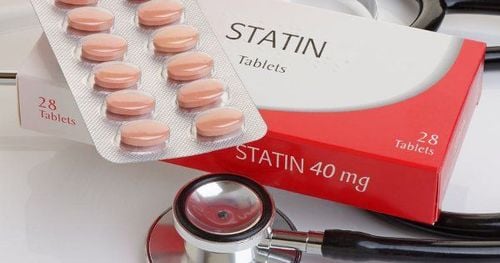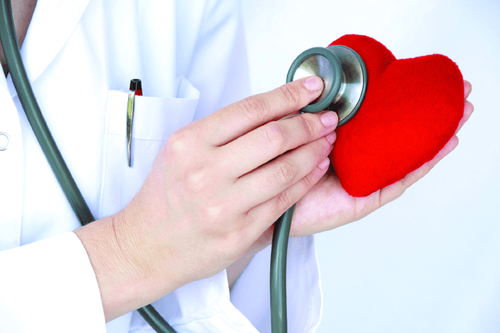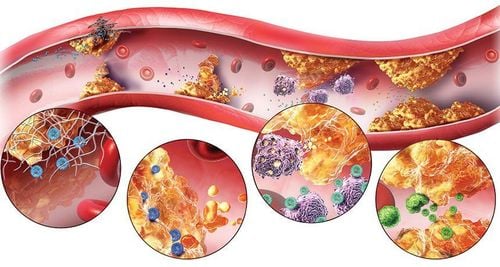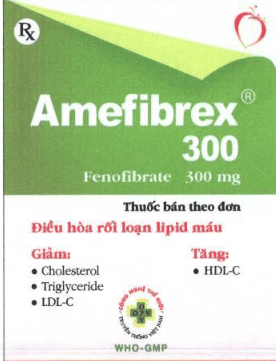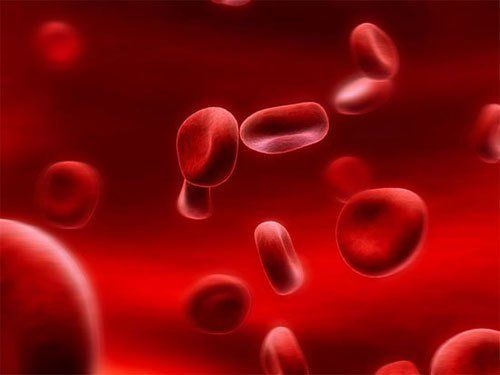This is an automatically translated article.
Dyslipidemia can lead to a number of dangerous diseases such as atherosclerosis, coronary artery disease, pancreatitis, stroke, myocardial infarction,... Lifestyle modification which includes changing the diet Eating for people with dyslipidemia plays an important role in the effective treatment of this condition.1. What is dyslipidemia?
Blood lipids are an important component in the body, helping the body to develop normally and be healthy. Types of blood lipids include: LDL, HDL and triglycerides. Dyslipidemia is defined as having one or more of the following: elevated total blood cholesterol, hypertriglyceridemia, increased LDL-cholesterol (bad cholesterol) or decreased HDL-cholesterol (good cholesterol). This phenomenon, if prolonged, can cause atherosclerosis, narrowing blood vessels and is the main cause of cardiovascular diseases.
2. Principles of eating for patients with dyslipidemia
Most cases of dyslipidemia are caused by improper nutrition: a diet with too much animal fat, foods containing cholesterol (animal organs, animal fats, whole dairy, eggs). ), habit of drinking alcohol, smoking,... Therefore, people with dyslipidemia, in addition to using drugs, also need a reasonable diet, combined with regular exercise and sports. regularly to treat the disease actively and effectively.
In the treatment of dyslipidemia, to reduce blood cholesterol, prevent atherosclerosis and coronary heart disease, the patient's diet needs to adhere to the following principles:
Reduce total energy intake during the day to thereby losing weight according to body mass index (BMI) if overweight or obese. In some cases of mild dyslipidemia, the disease can be stabilized after the patient adopts a weight-loss diet. Patients need to reduce the energy in the diet step by step, each week reduce about 300Kcal compared to the previous diet until reaching the energy corresponding to the BMI level; Reduce the amount of fat (lipid) according to BMI: Fat should only account for 15-20% of the total energy supply for the body. Patients should limit the consumption of saturated fats, instead should eat unsaturated fats; Make sure the amount of protein accounts for about 12 - 20% of total energy, including animal protein and vegetable protein. Increase protein (protein) intake by eating low-fat meat and soy products because they are high in phytoestrogens and isoflavones that reduce total cholesterol, LDL-cholesterol and triglyceride levels in the body; Use cereals in combination with potatoes, accounting for about 55-60% of dietary energy. Patients with dyslipidemia should eat brown rice, whole grains to provide more fiber for the body, contributing to the elimination of endogenous cholesterol; Eat a lot of vegetables, about 500g/day to provide enough vitamins, minerals and fiber for the body. Patients should use vegetables and fruits rich in antioxidants to reduce the risk of coronary heart disease such as: foods rich in vitamin E, beta-carotene, vitamin C and selenium, etc. Eat lightly when there are comorbidities. such as: hypertension, heart failure,... The number of daily meals of patients with dyslipidemia should be divided into several meals, at least 5 meals/day, at least 3 hours apart and should be adequate. 4 main food groups but minimize the amount of fat, at the same time increase vegetables and fruits with less sweet; Provide enough 2-2.5 liters of water/day.

Cung cấp đủ 2 - 2,5 lít nước/ngày
3. What should patients with dyslipidemia eat?
In fact, there are many foods that have the effect of lowering blood lipids, sometimes helping patients with mild dyslipidemia not need to use more drugs to treat the disease. Here are some foods that the patient should use when the blood fat is high:
Raw processed cereals: rye bread, raw rice,...; Fat-free milk; Lean meat or poultry without skin; Oily seeds such as chestnuts, peanuts, sesame, pumpkin, ... help provide Omega-3, Omega-6 fatty acids for the body; Fatty fish, eat at least 2 times/week; Unsaturated vegetable oils: olive oil, sunflower oil, soybean oil,...; Garlic: has the effect of increasing HDL-Cholesterol, has the effect of reducing cholesterol, triglycerides, LDL-Cholesterol in the blood and preventing atherosclerosis, preventing the formation of blood clots. However, eating too much garlic can lead to eyelid inflammation or conjunctivitis, damage to the stomach lining, leading to stomach ulcers. Therefore, patients with dyslipidemia with gastric disease and eye inflammation should not use it; Onion: has the effect of lowering blood cholesterol, improving atherosclerosis, reducing blood viscosity similar to aspirin; Soybean: eating 100g of soybeans per day helps reduce blood cholesterol by 20%, especially LDL-cholesterol. Soybean and soy products such as tofu, soy milk, ... are very good for patients with dyslipidemia; Cucumber: contains a lot of fiber, improves digestion, increases excretion and reduces cholesterol absorption; Seaweed: contains a lot of iodine and magnesium, which prevents the formation of cholesterol plaques in the blood vessels. In addition, the component laminaria polysaccharide present in seaweed can reduce total cholesterol and triglycerides; Chili: has a high content of vitamin C, improves the body's microcirculation, reduces blood cholesterol; Cauliflower: has a very high fiber content, rich in vitamins and minerals, especially flavonoids. Flavonoid is a vascular cleaning agent, capable of eliminating cholesterol deposited on the vessel wall, preventing platelet aggregation, reducing the risk of cardiovascular disease; Bitter melon: rich in vitamin B1, vitamin C and a variety of minerals, helping to reduce blood fat and improve the body's resistance; Mung bean sprouts: contain a lot of vitamin C, fiber, ... are beneficial in eliminating waste in the body, especially fats, thereby reducing blood cholesterol, reducing cholesterol deposition in artery walls. ; Carrots: rich in beta-carotene and vitamins, fiber, minerals, good for people with coronary heart disease, reduce blood fat and lower blood pressure; Mushrooms: shiitake, reishi, wood ear helps reduce cholesterol and blood triglycerides; Apples: contain a lot of pectin, which helps reduce cholesterol levels in the blood; Kiwi: has a high content of arginine, which enhances blood circulation, limits the formation of blood clots, reduces the risk of high cholesterol, coronary heart disease, atherosclerosis, high blood pressure, and myocardial infarction. heart,...
4. What should patients with dyslipidemia eat?
When taking care of patients with dyslipidemia, the following foods should be limited:Animal fat, skin, unfiltered animal meat, crab bricks, shrimp bricks; Full-fat milk; Egg yolks, butter, cheese,...; Poultry without skin on; Cakes made with egg yolks and saturated fat;
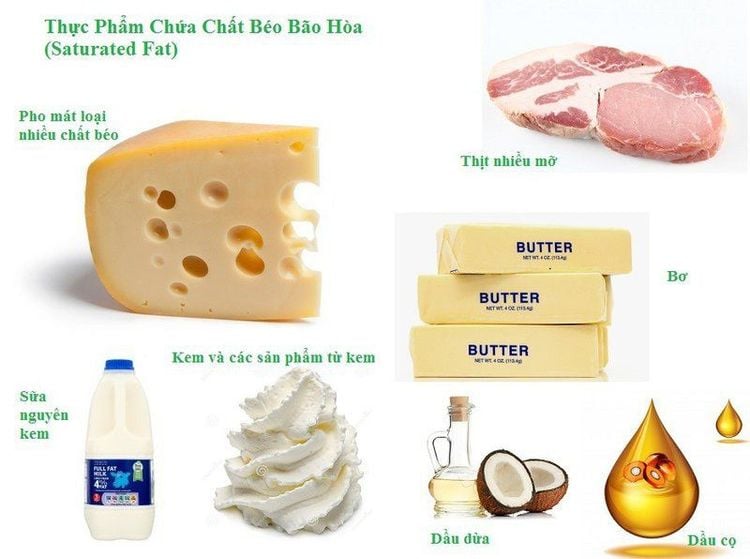
Hạn chế các loại bánh làm từ lòng đỏ trứng và mỡ bão hòa
Limit sugar, honey, should only consume a maximum of 10-20g/day; Animal viscera such as liver, kidney, brain, spleen,... Processed foods high in fat such as cheese, sausages, cold cuts,... Vegetable oils high in saturated fat such as palm oil, coconut oil, almond oil,... Margarine; Ready-to-eat fried foods, fast foods, including instant noodles,... In addition, patients with dyslipidemia also need to quit smoking, limit alcohol intake, avoid nervous tension and have good health. Regular exercise regimen,... Active exercise will help lose weight, lower blood pressure and reduce the risk of coronary heart disease.
In case the adjustment of diet and living does not reduce blood cholesterol, patients need to use cholesterol-lowering drugs as prescribed by the doctor. In particular, each person should pay attention to periodic health check-ups and blood lipid checks if they are at high risk of dyslipidemia to prevent the risk of unpredictable complications.
Please dial HOTLINE for more information or register for an appointment HERE. Download MyVinmec app to make appointments faster and to manage your bookings easily.




